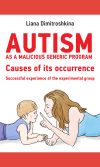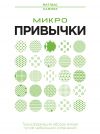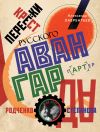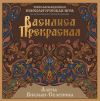
Автор книги: Коллектив Авторов
Жанр: Учебная литература, Детские книги
сообщить о неприемлемом содержимом
Текущая страница: 2 (всего у книги 6 страниц) [доступный отрывок для чтения: 2 страниц]
ГЛАВА III. ПРАКТИЧЕСКАЯ ЧАСТЬ: ТЕКСТЫ ДЛЯ АННОТИРОВАНИЯ И РЕФЕРИРОВАНИЯ
Sportswear. By Dylan Thomas.
An interesting commercial phenomenon of recent years is the way in which clothing apparel has copied sportswear. Hitherto, the wearing of tracksuits or jogging suits was confined to those practising sports. However partly because of the higher profile accorded to athletes and sports people via television, consumers began themselves to buy sports clothes for leisure wear. Research and investment by shoe companies, particularly Nike and Adidas, undoubtedly improved the quality of athletes’ footwear and introduced the running shoe or ‘trainer’. The companies used various new materials.
They also pruned their production costs by building factories in Asia and spent fortunes on sponsorship and advertising. As these shoes were both lightweight and comfortable, they became popular with consumers in general. This has meant that the sale of conventional leather shoes has declined, as that of sports shoes has risen. Sports clothing tends to be bought more by young males (47.8 percent); however, 27.9 percent of all adults bought trainers and 17.7 percent bought track suits in 1994. Even in the age group 55–64, 14.1 percent bought tracksuits (cloned briefly as ‘shell suits’). A feature of Britain’s supermarkets is the number of overweight people in trainers and jogging suits pushing shopping trolleys around the store as quickly as they can so they can get outside for a cigarette.
Formerly British clothes were discreet in terms of colours and attribution (a small label inside the collar at the rear). Clothes with logos displayed on the breast pocket of, shirts and pullovers then became popular. These included those of Fred Perry (tennis), Pringle (golf ), Ron Hill (running). A striking feature of the high street now is that much of the clothing that people wear is bright and has got large writing on it. That applies to general designer-wear such as Tommy Hilfiger or Helly Hansen, but this trend has come from sportswear where purchasers are practically walking advertising hoardings for: Nike, Umbro, Adidas, Asics, Fila and so on. The baseball cap is also becoming as universal in Britain as it is in the USA, though the influence here is partly sport, partly homage to America.
Coaching Principles. Is Coaching an Art or a Science? Science. By James Joyce.
To support the coach there is a wealth of scientific information based on research conducted with athletes. Information is available to support the coach and athlete in all areas of training and development including nutrition, biomechanics, psychology, physiology & medicine. There are a number of scientific methods to measure and analyze the athlete's performance e.g. computer aided analysis of VO2 max, lactate levels, running technique etc.
Art. The art of coaching comes when the coach has to analyse the scientific data and convert it into coaching and training programs to help develop the athlete. This analysis process relies heavily on the coach's experience and knowledge of the event/sport and the athlete concerned.
By understanding the science, which is the foundation of training, a well designed training program can be developed that will help an athlete reach their full potential.
So is coaching the art of understanding the science and then applying it?
Coaching Process. The coaching process comprises of three elements:
• Planning – developing short and long term training programs to help your athlete achieve their goals.
• Conducting – delivery of training programs.
• Evaluating – evaluation of the programs, athlete development and your coaching. This element may result in adjustment of your athlete's training program and your coaching.
• To support this process you will need to develop your knowledge and practical coaching skills. These include, but not limited to:
• your coaching philosophy;
• coaching styles;
• teaching methods;
• the learning process and training principles;
• the code of ethics and conduct for sports coaches;
• the sports coach's legal responsibilities;
• how to apply an athlete centred approach to your coaching;
• prepare training programs to meet the needs of each athlete;
• Long Term Athlete Development (LTAD);
• capabilities of growing children;
• the rules for your sport/event;
• how to assess your coaching performance;
• how to communicate effectively with your athletes;
• advise athletes on issues of safety applicable to their sport/event;
• the causes and symptoms of over-training;
• how to reduce the risk of injury to your athletes;
• assist athletes to develop new skills;
• the biomechanical principles that underpin efficient action;
• use evaluation tests to monitor training progress and predict performance;
• advise athletes on their nutritional needs;
• advise athletes on legal supplements;
• how to develop the athlete's energy systems;
• how to develop the components of fitness as appropriate for your athlete and event;
• advise athletes on relaxation, visualisation and mental imagery skills;
• advise athletes how to prepare for competition;
• evaluate an athlete's competition performance;
• evaluate athlete/training and athlete/coach performance;
• provide clear and effective instructions, explanations and demonstrations;
• conduct effective observation and analysis;
• provide clear and effective feedback;
• use effective questioning to determine what an athlete knows or can do, their understanding and to develop their self awareness.
Sport Drinks. By Joseph Conrad.
Sport drinks are electrolyte replacement beverages popular among athletes to replace water lost during exercise. It is important to drink plenty of fluids during strenuous exercise, especially during hot weather, because the body requires water for efficient cooling and for efficient operation of the kidneys in moving wastes from the blood. Glucose sodium sport drinks provide extra sugar and sodium, which also promote rapid fluid uptake by the small intestine. Some beverages contain glucose polymers (maltodextrins), small fragment of scratch. Glucose polymer beverages may be more effective than glucose drinks in replacing carbohydrates and in increasing blood sugar during endurance events (more than two hours in duration).
They do not slow the passage of liquid through the stomach as a high-glucose concentration does. Simple carbohydrates seem to provide their greatest benefit when exercise exceeds 60 minutes. A potential benefit of consuming glucose replacements during exercise is that fluid intake may increase if the taste is more appealing than plain water. The carbohydrate-electrolyte sport drink should be mixed so that the carbohydrate concentration is less than 10 percent to minimize retention by the stomach. On the other hand, the carbohydrate concentration should be at least 6 percent to improve endurance. When fluid loss is reduced by a cold environment such as in cross-country skiing, fluids with a carbohydrate concentration greater than 10 percent are appropriate. Sport drinks often contain more sugar and salt than are needed for optimal absorption of fluids, and they often contain less potassium than a glass of orange juice. Plain water, which is both easily absorbed and palatable, effectively replaces water lost with strenuous exercise. In general, there does not seem to be any need to replace electrolytes lost through sweating by consuming expensive beverages. Sport drinks appear likely to improve performance only in endurance exercise or day-long events. Diluted fruit juices are usually adequate electrolyte replacements. Fruit juices should be diluted at least twofold from standard preparations to prevent delayed gastric emptying. Electrolytes and carbohydrates are readily replenished by eating a banana, fruit, or crackers with water. Many commercial soft drinks contain caffeine, which acts as a diuretic. Therefore, athletes are advised to limit their intake of such beverages.
Early history of the sport. By Thomas Pynchon.
The history of sport probably extends as far back as the existence of people as purposive sportive and active beings. Sport has been a useful way for people to increase their mastery of nature and the environment. The history of sport can teach us a great deal about social changes and about the nature of sport itself. Sport seems to involve basic human skills being developed and exercised for their own sake, in parallel with being exercised for their usefulness. It also shows how society has changed its beliefs and therefore there are changes in the rules. Of course, as we go further back in history the dwindling evidence makes the theories of the origins and purposes of sport difficult to support. Nonetheless, its importance in human history is undeniable.
Sports that are at least two and a half thousand years old include hurling in Ireland, harpastum (similar to rugby) in Rome, cuju (similar to association football) in China, and polo in Persia. The Mesoamerican ballgame originated over three thousand years ago.
There are artifacts and structures that suggest that the Chinese engaged in sporting activities as early as 2000 BC. Gymnastics appears to have been a popular sport in China's ancient past. Monuments to the Pharaohs indicate that a number of sports, including wrestling, weightlifting, long jump, swimming, rowing, shooting, fishing and athletics, as well as various kinds of ball games, were well-developed and regulated several thousands of years ago in ancient Egypt. Other Egyptian sports included javelin throwing, high jump, and wrestling. Ancient Persian sports such as the traditional Iranian martial art of Zourkhaneh. Among other sports that originated in Persia are polo and jousting.
Sports in the Middle Ages. By Christopher Marlowe.
The sports of medieval times were less well-organized. Fairs and seasonal festivals were occasions for men to lift stones or sacks of grain and for women to run smock races (for a smock, not in one). The favourite sport of the peasantry was folk football, a wild sort of noholds-barred unbounded game that pitted married men against bachelors or one village against another. The violence of the game, which survived in Britain and in France until the late 19th century, was such that Renaissance humanists, such as Sir Thomas Elyot, condemned it as more likely to maim than to benefit the participants.
The nascent bourgeoisie of the Middle Ages and the Renaissance amused itself with archery matches, some of which were arranged months in advance and staged with considerable fanfare. When town met town in a challenge of skill, the companies of crossbowmen and longbowmen marched behind the symbols of St. George, St. Sebastian, and other patrons of the sport. It was not unusual for contests in running, jumping, cudgeling, and wrestling to be offered for the lower classes who attended the match as spectators. Grand feasts were part of the program, and drunkenness commonly added to the revelry. In Germanic areas, a Pritschenkoenig was supposed to simultaneously keep order and entertain the crowd with clever verses.
The burghers of medieval towns were welcome to watch the aristocracy at play, but they were not allowed to participate in tournaments or even, in most parts of Europe, to compete in imitative tournaments of their own. Tournaments were the jealously guarded prerogative of the medieval knight and, along with hunting and hawking, his favourite pastime. At the tilt, in which mounted knights with lances tried to unhorse one another, the knight was practicing the art of war, his raison d'être. He displayed his prowess before lords, ladies, and commoners and profited not only from valuable prizes but also from ransoms exacted from the losers. Between the 12th and the 16th centuries, the dangerously wild free-for-all of the early tournament evolved into dramatic presentations of courtly life in which elaborate pageantry and allegorical display quite overshadowed the frequently inept jousts. Some danger remained even amid the display. At one of the last great tournaments, in 1559, Henry II of France was mortally wounded by a lance blow.
Peasant women participated freely in the ball games and footraces of medieval times, and aristocratic ladies hunted and kept falcons, but middle-class women contented themselves with spectatorship. Even so, they were more active than their contemporaries in Heian Japan during the 8th to the 12th century. Encumbered by many-layered robes and sequestered in their homes, the Japanese ladies were unable to do more than peep from behind their screens at the courtiers' mounted archery contests.
Deeper. By Thomas Dekker.
The Latin words «Citius, Altius, Fortius» have been used as the Olympic motto since the Modern Olympics started in 1894. In English, we translate that motto into «Swifter, Higher, Stronger». Now, with the possibility of adding «Extreme Sports», popular competitive events that test the limits of human endurance and talents in ways not thought of in 1894, the current Olympic’s organizers may also have to rethink their motto.
Extreme Free Diving (EFD) is a sport that is growing in participants worldwide and is being discussed as a possible Olympic event. If accepted into the Olympics, EFD could make the Olympic’s organizers think about adding a new Latin term into the motto that we could translate as «Deeper».
Most of us think of deep water diving as the use of snorkels, masks, and fins to help us dive down beneath the surface of the water. Then there is scuba diving. Scuba divers wear wet suits made out of material to protect against the cold; they need oxygen and other equipment that enable them to safely breathe while traveling deep beneath the surface of the sea. For those with the courage and opportunity to attend the required classes and certification process to scuba dive and have actually entered the deep and swum with the fish and coral, scuba diving is an extremely gratifying experience. But is it the ultimate underwater extreme sport for those who like to live on the edge? When scuba diving is compared to Extreme Diving, diving without a tank of oxygen deeper and farther from the surface than anyone had imagined it would be possible to go, scuba diving seems a little less «Extreme». Extreme Free Diving has become very competitive and is exploding in popularity with «extreme» divers wherever athletes live near a sea.
The first official European record for Extreme Free Diving was recorded in 1911 when Greek Yorgos Haggi Statti descended to the depth of 253 feet, almost the length of a football field. He dove without a mask, fins, or an oxygen tank. He just dove. His record stood for many years until the modern «professional» EFDs began to dive even deeper.
Today, EFDs sink to depths approaching 400 feet, using weights to help them descend vertically into the big blue depths of cold and darkness that surround the earth. Free divers like Italian Umberto
Pelizzari and Cuban Pipin Ferreras frequently break world records by diving without the use of wet suits, fins, or oxygen tanks. Extreme Free Diving is truly a breathtaking sport. One day adding the word «Deeper» to the Olympic motto of «Swifter, Higher, Stronger» looks like a sure bet. The legendary Yorgos Haggi Statti would wipe water from his eyes, smile, and nod in approval.
Effective Teaching Techniques. By John Fletcher.
The most consistently identified teacher effectiveness variable is time on task. That is, the more time that students spend learning specific academic content, the better they will learn it. Distinction is made between allocated time on task (the time that teachers allocate to particular instructional activities) and engaged time on task (the time that students actually spend engaged in instruction). Although no consistent relation has been seen between allocated time on task and academic achievement, research has demonstrated that engaged time on task is positively related to academic achievement.
Strategies for maximizing engaged time on task have been identified and include effectively managing transitions, avoiding digressions and other irrelevant verbalizations, and managing classroom behavior. Sometimes, teachers can improve studentengaged time on task by examining the amount of allocated time for class and monitoring their own teacher behaviors more closely. For example, teachers may find that they start classes 5 minutes late, end classes 5 minutes early, stop during the middle of class to search for relevant instructional materials, and stop to manage inappropriate classroom behaviors. Once such target areas are identified, teachers can design strategies to improve each area that will result in increasing the amount of student-engaged time on task during classes.
Effective teacher presentations have also been identified. Teachers maximize achievement when their presentations contain elements such as structure of lesson, clarity of teacher presentation, redundancy in emphasizing important concepts, and enthusiasm. Structure includes enlisting students’ attention, providing a lesson overview that includes lesson objectives, providing outlines of the lesson and indicating when transitional points occur, and summarizing and reviewing key points as the lesson proceeds. It is important that students be made aware of the structure and objectives of the lesson so that they will know what is to be accomplished and how it will be accomplished. For example, teachers who begin with statements indicating the order of the learning activities (e. g., «First, we will…», «Second, We will be…», «Finally, We will…») provide the structure for the lesson for all students. Clarity includes presenting clearly and directly to the point of the lesson, avoiding vague or unfamiliar terminology, and providing concrete understandable examples. All teacher dialogue should be directly pertinent to the objective of the lesson.
Redundancy does not refer to unnecessary repetition; rather, it refers to reemphasis and restating of the key elements of a lesson, particularly significant concepts and rules. Redundancy refers to the provision of multiple opportunities to practice learning newly presented content. Additional practice opportunities can vary in format and length given that the goal is to provide students with many chances to practice learning new information.
Sport or Theater? By Francis Beaumon.
While a complex, rapidly developing sport may be expected to generate many internal problems, synchro’s main controversy, «sport or theater,» is generated externally, by media that are unwilling to consider as «sport» anything not meeting the «swifter, higher, stronger» standard. But even Sports Illustrated, despite normally less than flattering reviews, admitted in its report on the 1984 Los Angeles Olympics, «Synchronized swimmers may look like cupcakes, but they’re tough cookies, half the routine is performed upside down in a pool.»Its water-show beginnings still haunt it. The idea that water ballet is show, while synchronized swimming is sport, has been hard to sell to swimming officials, the public, and the media. Its acceptance into the Olympic Games came only after Lord Killanin, then chair of the International Olympic Committee, saw it for himself at the third World Aquatic Championships. «I am very impressed. I saw synchronized swimming for the first time today. It is a very elegant sport.» Synchro enjoys more popularity and acceptance as a sport in parts of the world outside the United States. In every Olympic competition, 1984 through 1996, it has been one of the first sports to sell out all audience tickets. Another issue is male participation. Interestingly, at the turn of the century competitions in the equivalent of figures were for males. Then the beautiful spectaculars of aquacades and films accented the female attraction. Early U.S. competitions included male championships, but they were never popular. Neither U.S. nor international rules prohibit male participation except for the Olympic Games and the World Aquatic Championships.Presently, male participation is greater in Europe than in the United States and Canada. Indeed, in 1991, the French national champion duet was a mixed pair and a junior male qualified, in 1996, to be part of the U.S.National Junior Team and will compete in competitions that allow males. Men are included in the U.S. masters program.
Sports Science and Technology. By Beaumont Fletcher.
The discipline of sports science in medicine and technology is a combination of biomechanics, kinesiology, and anatomy. Within these parts, sports science dates back to Aristotle and Archimedes, when sport was an integral part of Roman and Greek life and inspired a fascination with the mechanics of the human body. By the twentieth century, sports science also began to include varying disciplines such as engineering, polymer science, psychology, and psychiatry, and performance-enhancing pharmaceuticals inspired by high-stakes competition. Today, the business of sports equipment – from running shoes to stair machines – is a multibillion dollar industry based on the continuing evolution of sports science. As a regular to Gladiator competitions and a physician to the athletes, the second century AD Greek Galen laid out the basic motor functions of the human body. He identified the processes of muscle contraction and the influence of the mind – or «animal spirits» as he called it – on the performance of the body. Isaac Newton’s basic theories of scientific reasoning, specifically the study of modern dynamics, laid the groundwork for understanding the relationship between forces and their effects, based on his laws of rest and movement published in Principia Mathematica Philosophiae Naturalis. Not until Leonardo da Vinci studied the structure of the full human body were the specific mechanics necessary for simple movements grasped – from walking and sitting to jumping and sprinting. From that time, interested physicians, engineers, and scientists have pursued elements of biomechanics and kinesiology.
By 1865, Gullaume Benjamin Amand Duchenne published Physiologie des Mouvements, which identified each individual muscle in relation to its range of movement, making it the basis of most sports science work today. Twenty years later, Etienne-Jules Marey studied the motion of humans and animals through photography, publishing his groundbreaking work, Le Mouvement, which examined, frame by photographic frame, the intricate interaction of nerves, muscle, and bone.
With the onset of World War I, an interest in biomechanics swelled, though under unfortunate and sometimes inhumane circumstances: Analysis of soldiers on the march and of prosthesis for amputees and the exhaustive study of prisoners of war and concentration camp prisoners all furthered the understanding of biomechanics and kinesiology. In particular, Frenchman Jules Amar, evaluated the human gait and the task performances of World War I veterans. He employed force and motion measurement techniques to help develop prosthetic limbs. Further research in this subcategory of kinesiology led to studying movement in three dimensions, which led to mathematical analysis of the range of joint forces, movements, and the elements of muscle strain and force against bone and ligaments. The invention of the ergograph by Angelo Mosso in 1884 assisted greatly in further analysis of human movement in the first half of the twentieth century and evolved into several specialized forms to study very specific muscular functions in the human body. In general, the study of ergonomics as part of the Industrial Age push to better human work performance influenced the development of specialized sports equipment. Track shoes, for example, were designed to allow the foot a «natural» range of motion by using soft leather and a snug fit.
Child protection. By Robert Herrick.
Professionals. All individuals involved in sports activities with children and young people have a responsibility to safeguard their welfare. The majority of children who participate in sport do so in a safe and positive atmosphere with the support and encouragement of those involved with the sport. However a number of children do not have a positive experience and sport like other aspects of society now recognises the need to guard against individuals who may abuse their position in a sport. An increasing number of children and older athletes are now speaking out about their experiences of abuse and those involved in this field are beginning build up a clearer picture of the nature and extent of abuse in sport. There are a number of steps you can take to promote the welfare of the children and young people involved in sport. Within this section you will find advice and information about developing good practice in relation to child protection. You should also consider contacting the governing body of your sport or your professional body who may have produced a child protection policy and detailed guidance about how to respond to concerns. What is abuse? Child Abuse is any form of physical, emotional or sexual mistreatment or lack of care that leads to injury or harm. It commonly occurs within a relationship of trust or responsibility and represents an abuse of power or a breach of trust. Abuse can happen to a child regardless of their age, gender, race or ability. Abuse and Neglect Somebody may abuse or neglect a child by inflicting harm, or by failing to act to prevent harm. Children may be abused in a family or in an institutional or community setting by those known to them or, more rarely, by a stranger.
Sports and Nationalism. By Richard Lovelace.
In the US, the Olympics have been the most obvious site for the intersection of sports and nationalism. Until recently, therefore, the major compensation that could be derived from being an Olympian, given the strictures associated with maintaining status as an amateur, came from the visibility afforded those who represented their country preferably with distinction. When most Americans played football and baseball, games which had only a limited international dimension, sporting outlets for nationalist and patriotic fervor were confined to the Olympics. Television commentators were acutely aware of this and their coverage of the Olympics focused fundamentally on highlighting American successes. Moreover, nationalist intensity associated with the Olympics was exacerbated by Cold-War rivalries. Americans as the leader of the «Free World» competed with East Germany and the Soviet Union, the communist powerhouses.
African American track stars, boxers and college basketball players were able, at least in small measure, to reap the benefits of favorable attitudes deriving from their goldmedal winning performances. Many of the athletes also celebrated their «Americanness,» often taking victory laps or in some way wrapping themselves in the American flag. Other black athletes, especially at the 1968 Mexico and 1972 Munich Olympics, used the platform to make statements of protest against racial policies in the United States.
Many of the memorable moments in Olympic sports, then, have been those that could be framed in reference to nationalism. The Soviet Union’s disputed victory at the 1972 Munich Olympics against a highly favored American basketball team (the game being decided on a very controversial last-second play) was cause for dismay. Eight years later, at the winter games in Lake Placid, New York, during the Iran hostage crisis, the success of the US hockey team’s college players against the Soviet «machine» gave rise to widespread euphoria. In gymnastics, the five-medal performance of Mary Lou Retton at the 1984 Los Angeles games (clad in new flag-motif leotards) made her the darling of games tainted by a Soviet boycott.
This identification between nationalism and the Olympics has diminished somewhat in recent years. In part this is due to the end of Cold-War rivalries, but it is also a result of the growing professionalism of the Olympics. The athletes no longer need to maintain amateur status and so no longer pin all their hopes on their Olympic performances. Moreover, some of the competitiveness has been undermined by the inclusion of professionals in recent games. Instead of a team of American basketball players drawn from the NCAA, the US now fields «dream teams» that pull in stars exclusively from the NBA. The winner of the gold medal is now a foregone conclusion and many of the games in which the United States plays end up being humiliating for the other team. In other Olympic sports, nationalist sentiment is on the rise. This is particularly so for women’s soccer, where Americans dominate but maintain strong rivalries with countries like Brazil and China, and patriotic feelings feed on the other major arena of sporting nationalism – Soccer's World cups.
TOPIC: TEACHING. By Thomas Carew.
It is the profession of those who give instruction, especially in an elementary or a secondary school or in a university.
Measured in terms of its members, teaching is the world's largest profession. In the late 20th century it was estimated that there were 30,000,000 teachers throughout the world. Though their roles and functions vary from country to country, the variations among teachers are generally greater within a country than they are between countries. Because the nature of the activities that constitute teaching depends more on the age of the persons being taught than on any other one thing, it is useful to recognize three subgroups of teachers: primaryschool, or elementary-school, teachers; secondary-school teachers; and university teachers. Elementary-school teachers are, by far, the most numerous worldwide, making up nearly half of all teachers in some developed countries and three-fourths or more in developing countries. Teachers at the university level are the smallest group.
Внимание! Это не конец книги.
Если начало книги вам понравилось, то полную версию можно приобрести у нашего партнёра - распространителя легального контента. Поддержите автора!Правообладателям!
Данное произведение размещено по согласованию с ООО "ЛитРес" (20% исходного текста). Если размещение книги нарушает чьи-либо права, то сообщите об этом.Читателям!
Оплатили, но не знаете что делать дальше?








































